Burn Notice
Wildfires are on the rise across the globe and curbing them will be a team effort among organizations and technology. Gilberto DeSalvo and his company, Delphire, are joining the battle.
By Marisa Demers
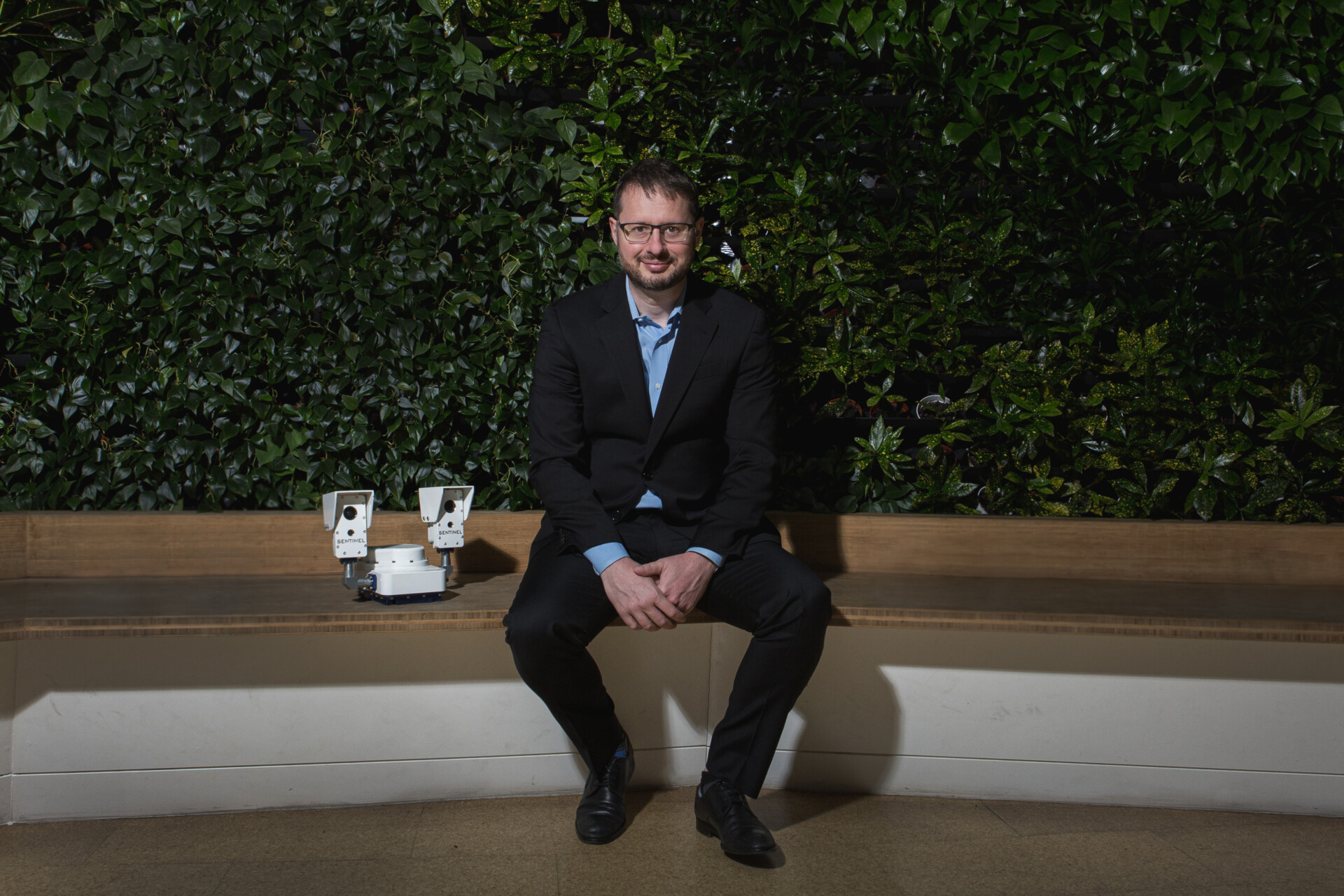
When Gilberto DeSalvo, PHD (PHD ’18) was at Caltech, studying biology and using machine learning to help sort through the vast data from his automated lab experiments, his apartment caught fire. It was an electrical issue in the unit below him, and he had to stand by and watch as his belongings burned and succumbed to smoke damage. Having had the experience of needing to evacuate and being displaced, DeSalvo wanted to help others who may face the same fate.
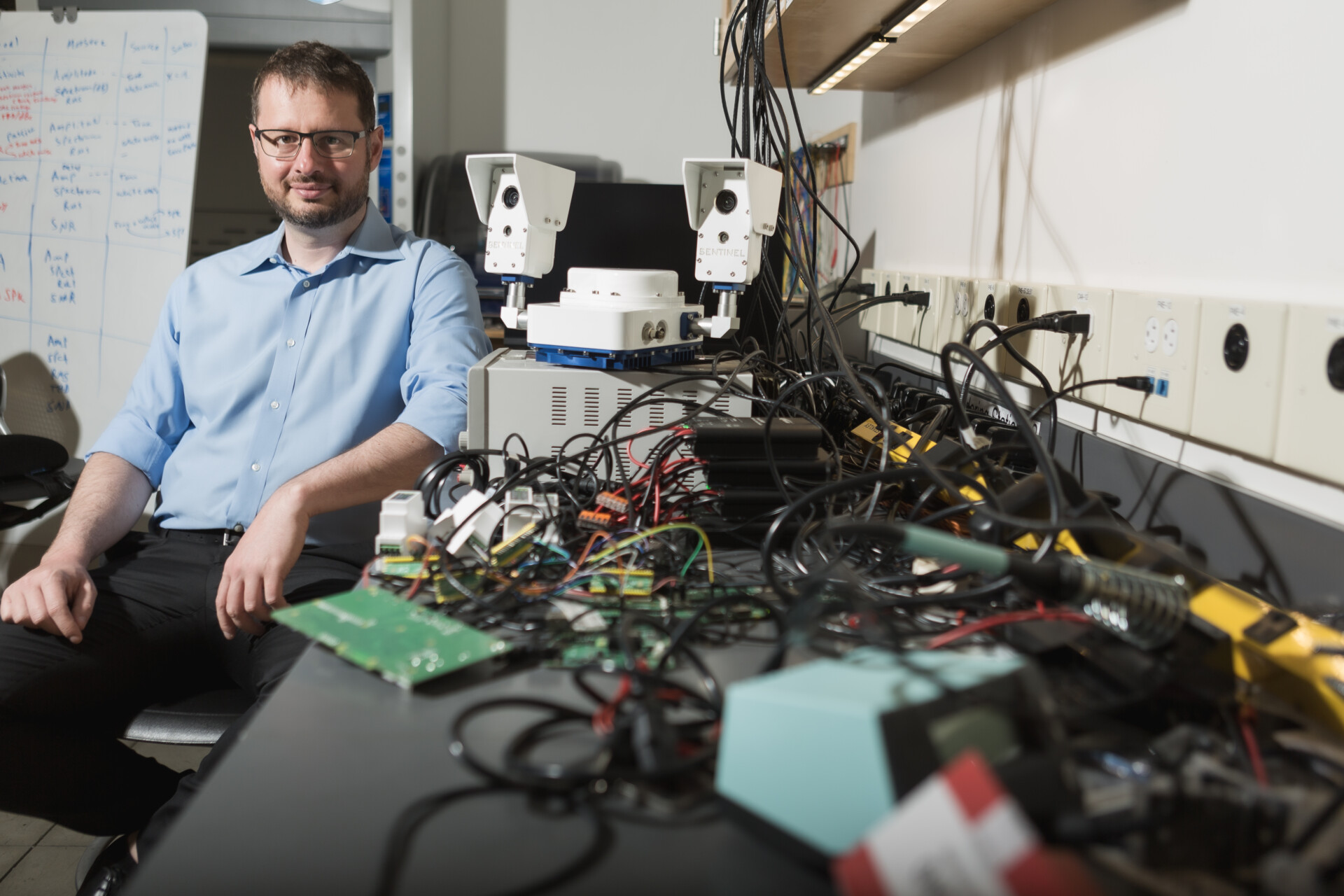
Unfortunately, that population is growing, with the intensity and frequency of wildfires increasing around the world. One recent study from the University of Maryland found that wildfires are burning nearly twice as much tree cover today as they did 20 years ago.
His solution to this growing threat was Delphire, a company he founded in 2020, and its signature product: the Sentinel FD3, a device loaded with dual cameras boasting infrared technology, GPS, and smoke sensors to locate fires in their earliest stages. The Sentinel is fueled by an onboard AI, allowing it to collect, analyze, and share data rapidly when needed to lower the risk of devastation to communities. The device also collects information that can assist first-responders, utility companies, forest management officials, and federal, state, and local agencies who are making decisions around planning, and—when needed—evacuation and firefighting.
Here, DeSalvo talks about the technology, his unique customer base, and his hope to make a difference with his company.
Before bringing situational awareness to help those fighting fires, you earned your PhD in biology and focused on machine learning. What led you from lab experiments to combating the wildfires through AI?
Gilberto DeSalvo: During COVID, everything was covered in smoke from the 2020 fires here in Pasadena, and it seemed like a good time to do something about it. So I studied the problem and saw how the electrical grid was the potential cause of some of the more devastating fires in recent memory due to failing or downed wires. At Delphire, we’re not tackling deep forest fires, which really only amount to about 5% of fires. There are other technologies that are better suited for that work. So I decided to focus on the problem that I saw, tackling fires inside utility rights-of-way and near communities, so we created a product that would give communities and first-responders earlier detection, and help utilities and local agencies model risk.
Your signature product, the Sentinel, looks like a camera, which is a common tool in wildfire detection, but this is much more than that. Explain the technology.
GD: It’s been a bit of a struggle to explain our product, because whenever you talk about wildfire detection, everybody naturally thinks about a camera on a mountaintop. We’re trying to rewrite what that looks like by bringing the AI component directly inside our device to detect flame and smoke. We’re also harnessing additional data that can be useful for predictions and modeling. Infrared imagery gives us an idea of where a fire might be spreading by seeing through smoke. Smoke and chemical sensors detect where the smoke is localized. There are also weather sensors built into the unit so we can see wind speed and direction. It’s more than just an image of smoke in the hills of California — it’s a collection of data that’s sent to us from units near power lines, critical assets, infrastructure, and people. So the point here is to offer data and provide wider visibility into these particular issues so that everybody has a true understanding of the problem, which will allow organizations and community leaders to make informed decisions.
“Who else can we partner with to have an impact? Who can we work with? That’s ultimately what needs to be done to tackle fire. This is not a one-company or one-person effort.”

You have previously compared the technology to a home security system, but Delphire’s market isn’t individuals. Who is your customer?
GD: The utilities are our core market. We also are looking at communities as a possibility; an HOA might deploy these, for example.
But the camera on the mountaintop is the main technology in use now, and it will continue to be. That said, there are a lot of locations where bringing the infrastructure needed for those cameras would be difficult and expensive—you have to run energy wherever you place those devices. Those are the areas that Delphire is targeting. Our unit isn’t much larger than the cameras currently in use, and it’s solar-powered, freestanding, and compact. It can be affixed to already-established utility towers or can be self-deployed in harder-to-reach locations. We’ll be integrating our cameras into the system so that they work seamlessly with technology already in use and enhance the visibility of some of these areas near communities.
We’re not trying to replace the current methodology; we’re just trying to enhance it because clearly there’s still a problem. If mountaintop cameras were completely sufficient, then we wouldn’t have fires grow out of control.
Where do you hope to go from here?
GD: Delphire, which is currently funded by a Department of Energy Small Business Innovation Research grant, collaborates with organizations like Alert California, Watch Duty, the Lawrence Berkeley National Lab, and the NASA Ames Research Center to help detect actual fires and provide data for risk modeling. We’re thinking about it from a big-picture perspective, not just from a detection standpoint. Who else can we partner with to have an impact? Who can we work with? That’s ultimately what needs to be done to tackle fire. This is not a one-company or one-person effort.
We are going to add some additional deployments near communities and utilities so we can have a broader impact in early detection. We’re demonstrating this technology throughout California and have expanded to high-risk areas in Colorado. We’re also participating in the upcoming XPRIZE competition focused on wildfires. This is an ongoing competition over the course of several years, with the goal of demonstrating rapid detection and autonomous suppression of fires.
Overall, my hope is to see Delphire scale up, to create more partnerships, and to really help people. At the end of the day, that’s why I started this company.

Marisa Demers is a freelance writer who got her start covering wildfires and breaking news for newspapers. She also worked for Caltech and was most recently an assistant director for the Caltech Associates. A San Gabriel Valley native, she has enjoyed following Caltech’s scientific breakthroughs and student pranks over the years.
Related Articles
-
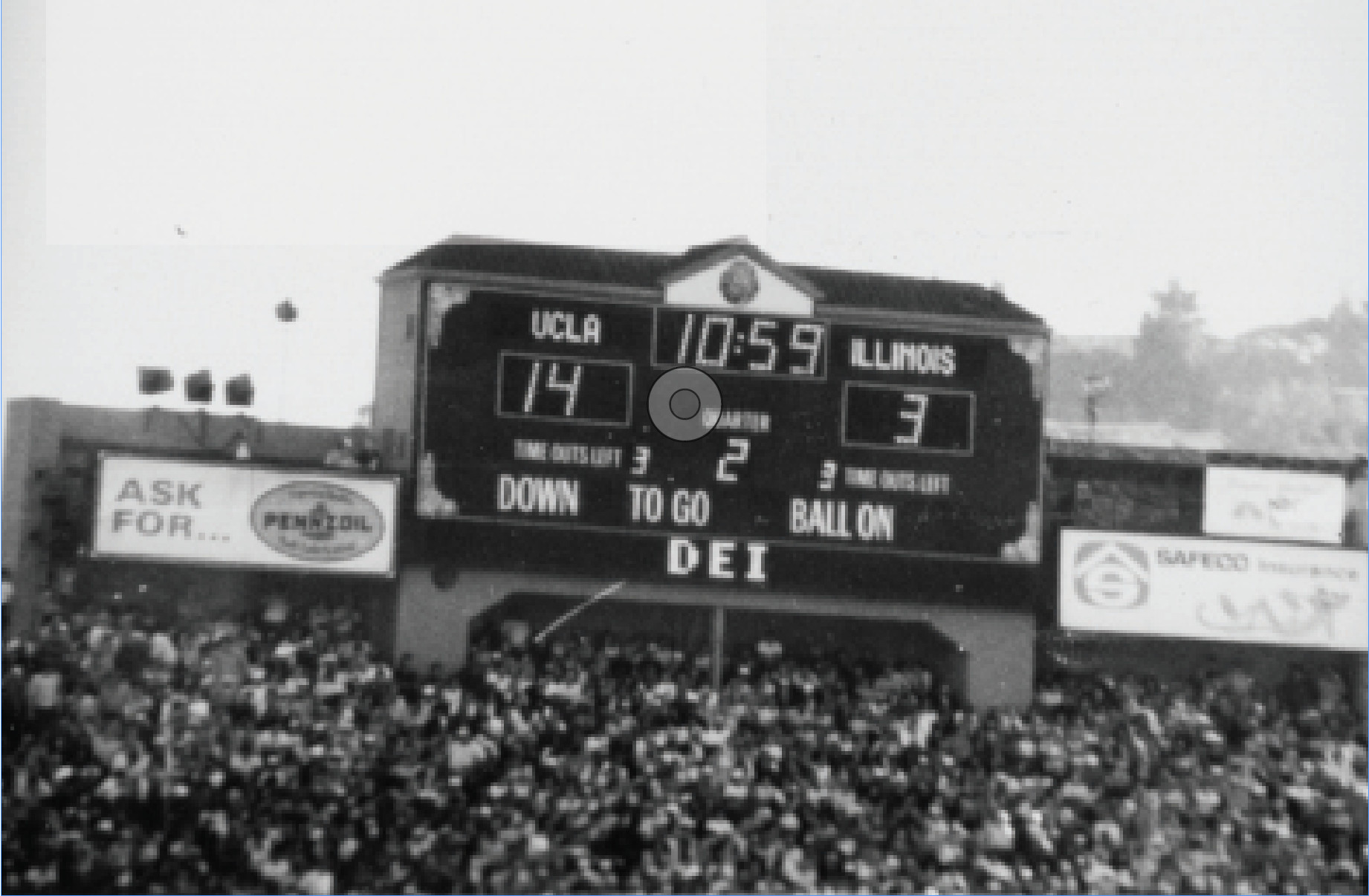
A Legendary Hack Turns 40
In this moment of Caltech mischief that required months of planning, students Ted Williams, PhD (BS ’84) and Dan Kegel (BS ’86) manipulated the sco...
-
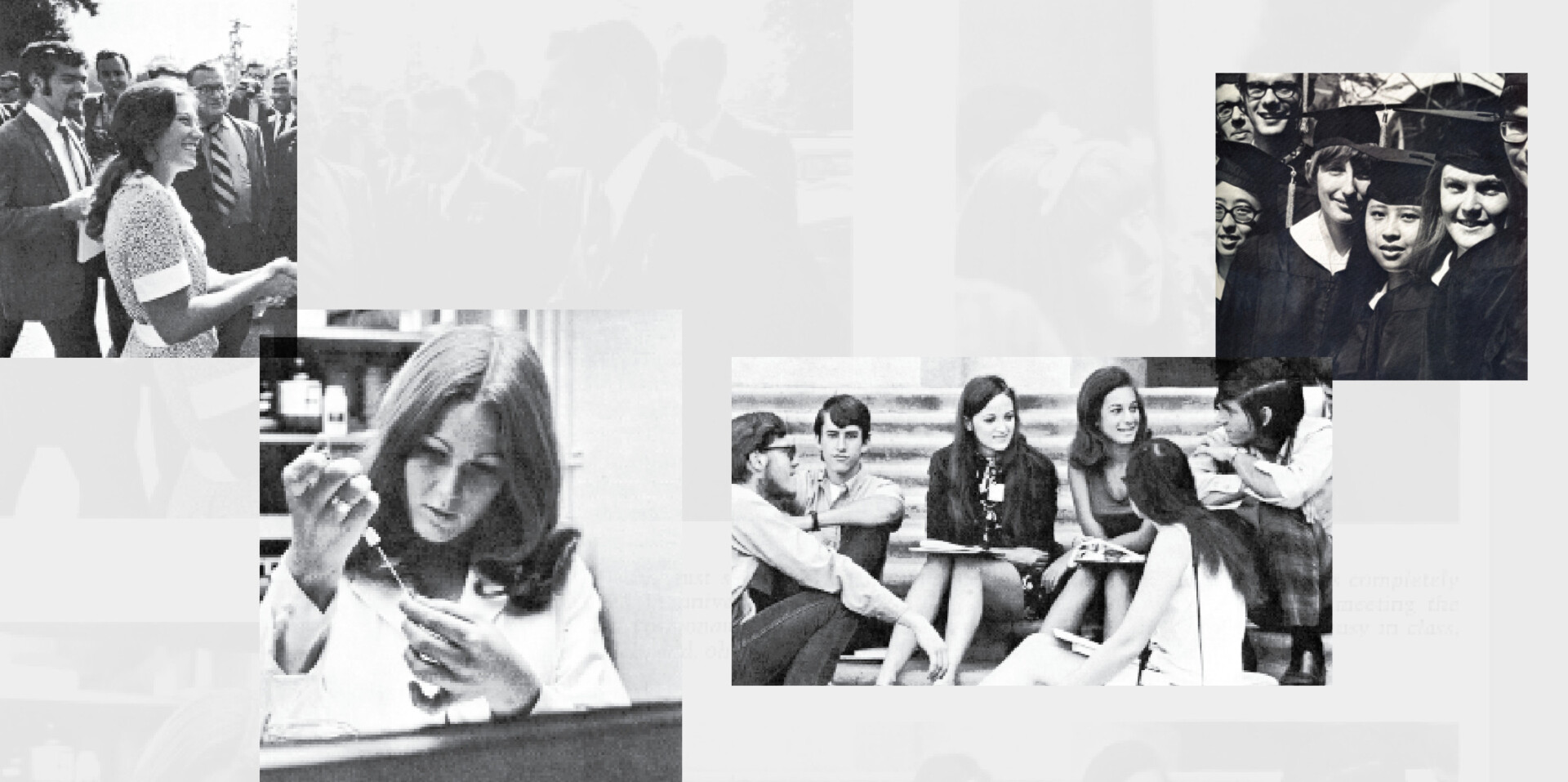
The Pioneers
On the 50th anniversary of their graduation, the first four-year female graduates reflect on their time on campus—and where they went from here.
-
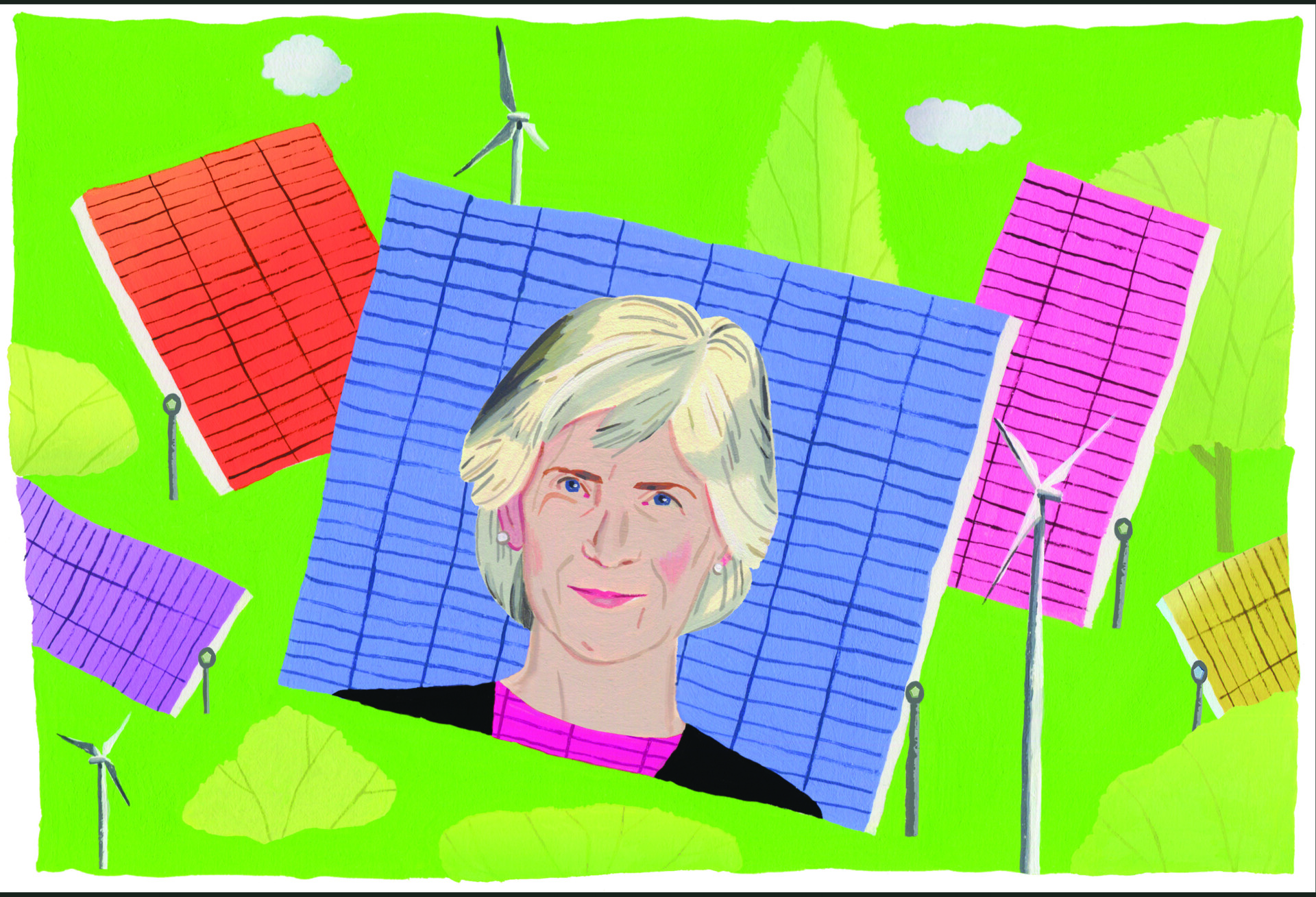
All In
The key to a more sustainable future? Make sure everyone can join the hunt for solutions, says National Energy Technology Laboratory director Maria...